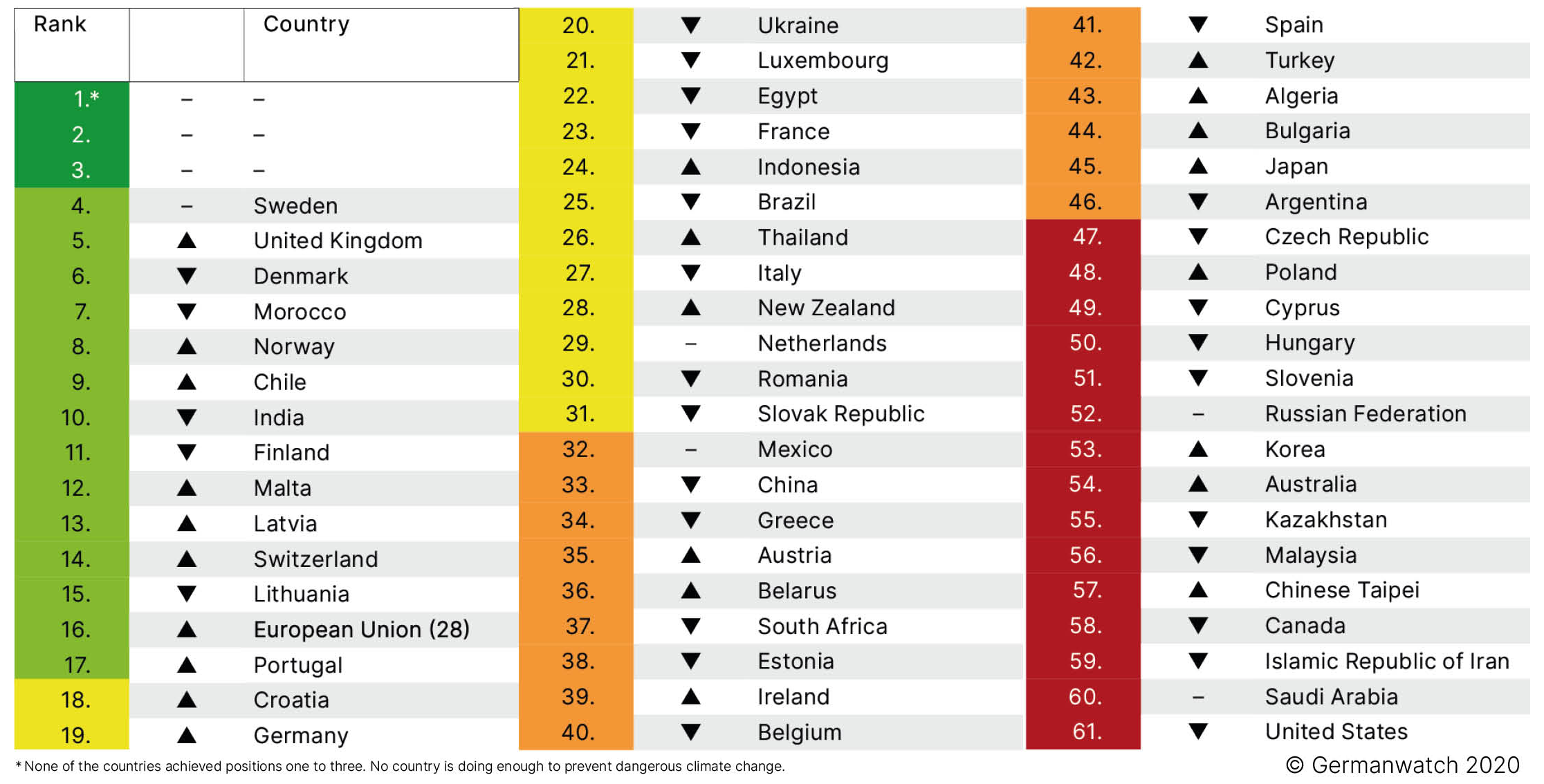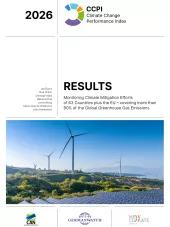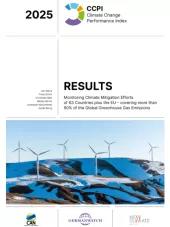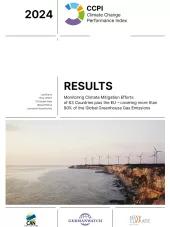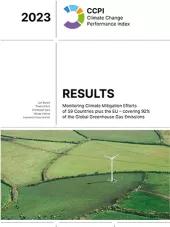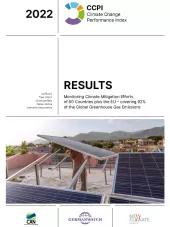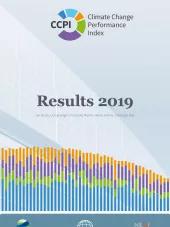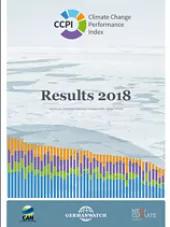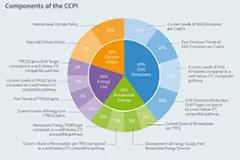Developed by Germanwatch, NewClimate Institute and CAN, the index rates 57 greenhouse emitters globally since 2005.
Foreword
The CCPI analyzes and compares climate protection across 57 countries (plus EU as a whole) with the highest emissions. Together these countries account for 90 percent of global emissions. The index aims to enhance transparency in international climate politics and enable comparison of mitigation efforts and progress made by individual countries. 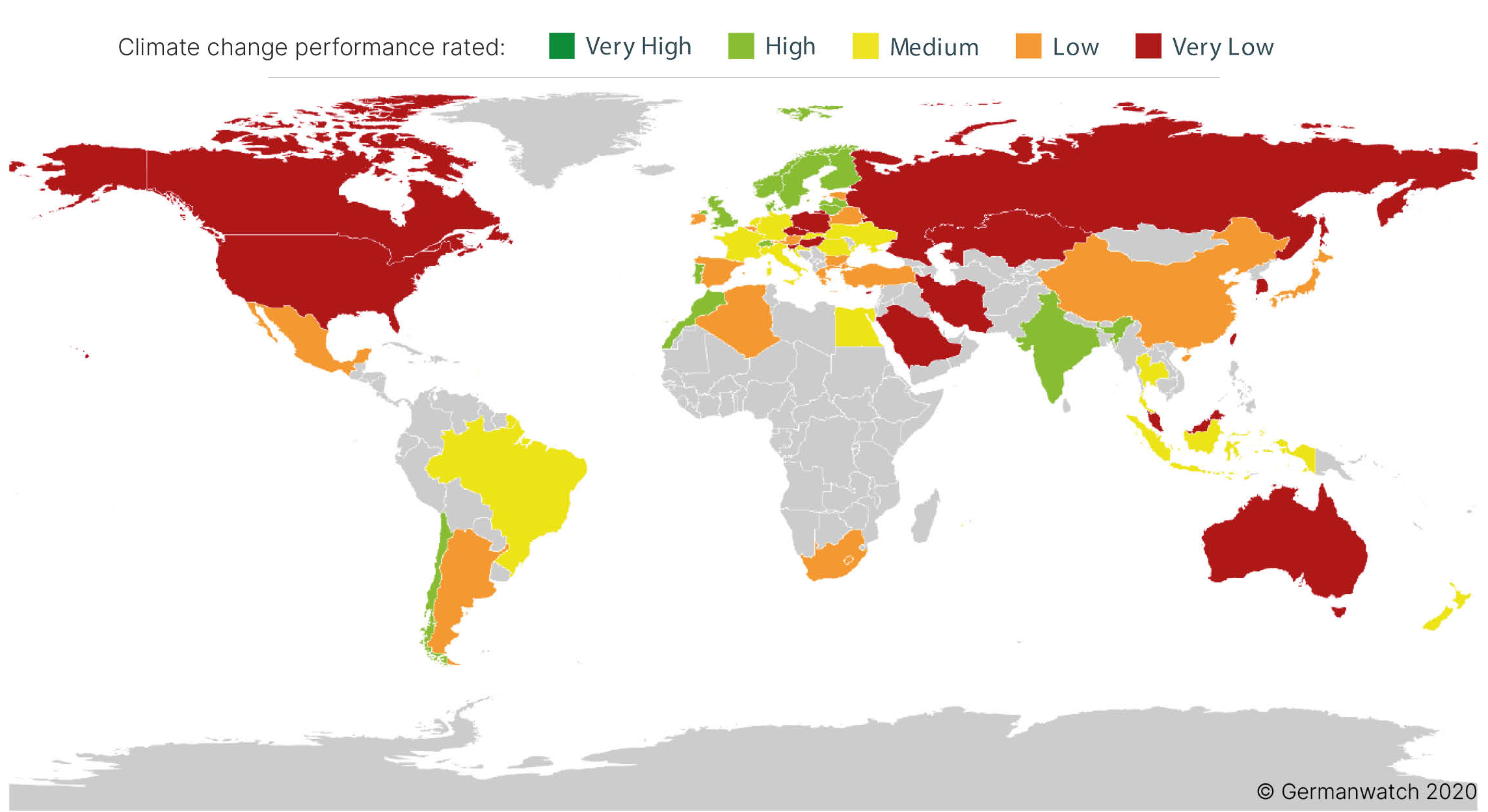
Main findings:
Climate Change Performance Index 2021: Still no country good enough; EU stands at a crossroads
The Climate Change Performance Index (CCPI) 2021 paints a mixed picture of the European Union (EU) climate action. Scandinavian EU countries, Portugal and the EU as a whole rank high on the index with relatively good indicators. However, Hungary, Poland and the Czech Republic stand out as laggards on climate progress within the bloc. In the overall ranking, the EU has improved from the 22nd place last year to the 16th place this year, almost exclusively thanks to a much better rated climate policy. The latest Climate Change Performance Index clearly shows that the EU stands at a crossroads. The EU can become a role model in climate protection with green recovery measures after the coronavirus crisis, by setting an ambitious climate target for 2030 in line with the 1.5°C-limit and a good implementation and further development of its Green Deal. But it can also stumble badly if it pursues greenwashing instead of green recovery and implements inadequate targets and instruments in the European Green Deal.
Only three G20 members lead in the rankings, with six at the very bottom
The G20 also presents a split picture. The United Kingdom (5th), India (10th) and the EU score high on the index. The vast majority of G20 countries, however, are trailing in the rankings. The USA (61st), Saudi Arabia (60th), Canada (58th), Australia (54th), South Korea (53rd) and Russia (52nd) are all rated "very low". While a turning point in global emissions seems to be within reach, five years after the Paris Agreement no country is on a path compliant with the Paris Agreement goals. Overall, greenhouse gas emissions have increased slightly, but are actually falling in more than half of the countries (32) surveyed. In two-thirds of the countries (38) more than ten percent of the total primary energy required now comes from renewable sources and in twelve countries renewables account for more than 20 percent. "It is now all the more crucial that worldwide economic recovery does not only support reviving economies, but is also preparing for a zero-carbon global economy at the same time. Whether the majority of recovery actions surveyed for the index are reducing or increasing greenhouse gas emissions is still unclear. But there is still room to shape the recovery packages and many good measures are under discussion,” says Prof. Dr. Niklas Höhne of NewClimate Institute.
Spain, Belgium and Greece decline in climate performance
Sweden (4th place, category "high") remains an international frontrunner in climate protection for the fourth year in a row. However, Sweden is no "climate role model" either. Like every other country so far it is not yet on a path to achieving the targets of the Paris Agreement (which is also why the first three places of the CCPI remain vacant). On the other hand, Sweden is setting standards in greenhouse gas emissions, renewable energy and climate policy (rated in the top group for each). The very high energy consumption per capita (49th place) prevents the country from achieving an even better evaluation. In the overall ranking, the United Kingdom (5th) and Denmark (6th) follow. Portugal (from 25th to 17th place) and New Zealand (from 37th to 28th) are among the biggest climbers. Japan also climbed six places (from 51st to 45th) but still receives the rating "low" (last year: "very low"). On the other hand, Slovenia (from 44th to 51st), Spain (from 34th to 41st), Belgium (from 35th to 40th) and Greece (from 28th to 34th) have shown the most decline.
Morocco, Chile and India: three developing nations among the top ten
Three developing countries are also among the top ten in the ranking: Morocco (7th), Chile (9th) and India (10th). Stephan Singer, Senior Advisor, Global Energy Policies of Climate Action Network: "The largest fossil fuel exporting and producing countries representing less than 10% of global population, the United States, Russia, Saudi Arabia and Australia are rightly at the bottom of the table. They are among the highest carbon polluters and the highest energy consumers. None of them have any useful federal climate policy in place to reduce carbon pollution. That shows the influential power of the fossil fuel industries in these countries. On the other hand, we see many smaller nations like Portugal, Morocco, Chile and others in Europe which perform much better. As civil society, to combat the climate crisis effectively, we need to dismantle the business model of the fossil fuel companies worldwide."
USA, Saudi Arabia and Iran: the worst performers
Once again, the performance of the USA is disastrous: The final year under President Trump is the second time in a row that the USA is ranked last, below Saudi Arabia. In all four categories except renewable energy ("low"), the USA ends up in the bottom of the table ("very low") and is the only country besides Australia and Algeria to receive the worst rating of "very low" both in national and international climate policy. The plans of president-elect Biden present great opportunities for this assessment to improve significantly but only if the promises from the election campaign are actually delivered. Given the still unclear majority in the Senate, it is uncertain how much of this will be implemented. 